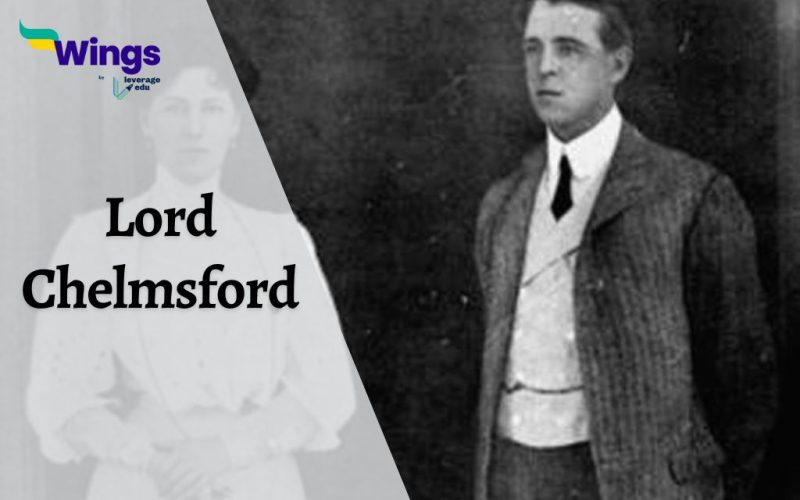Lord Chelmsford, also known as Lieutenant-General Frederick John Napier Chelmsford, was a prominent figure in the history of British colonial rule in India during the early 20th century. Serving as the Viceroy of India from 1916 to 1921, his tenure was marked by significant events and challenges. In this blog, we will explore the life, career, and impact of Lord Chelmsford on British India.
Table of Contents [show]
Early Life and Career
Lord Chelmsford was born on June 7, 1868, into a family with a rich military tradition. His father was Field Marshal Hugh Gough, a notable military figure in British history. With such a background, it was almost preordained that Chelmsford would follow a path of military service and leadership.
Chelmsford received his education at Eton and the Royal Military Academy, Woolwich, where he was groomed for a military career. He subsequently served in various capacities within the British Army, with significant postings in South Africa during the Second Boer War and in India.
Viceroyalty in India
Lord Chelmsford took office as the Viceroy of India in 1916, succeeding Lord Hardinge. This period was particularly challenging, marked by the tumultuous backdrop of World War I and the growing discontent and demands for independence from Indian leaders and political parties. Chelmsford’s tenure would test his leadership and decision-making skills as he navigated through these complex issues.
Jallianwala Bagh Massacre
One of the most notorious incidents during Chelmsford’s time as Viceroy was the Jallianwala Bagh massacre of 1919. The incident occurred in Amritsar, where British troops under the command of General Reginald Dyer opened fire on a peaceful gathering of Indian protesters, resulting in hundreds of casualties. The brutal suppression of the protest shocked the world and drew international condemnation.
Chelmsford’s response to the Jallianwala Bagh massacre was criticized by many as inadequate. While he expressed his disapproval of Dyer’s actions and removed him from his post, he also refrained from taking more severe punitive measures against Dyer, which drew widespread criticism and increased tensions in India.
Montagu-Chelmsford Reforms
Chelmsford’s tenure as Viceroy coincided with a growing demand for constitutional reforms in India. The Montagu-Chelmsford Reforms, officially known as the Government of India Act 1919, was a significant milestone during his administration. These reforms introduced limited self-governance at the provincial level, with the objective of including Indians in the administrative processes and decision-making.
Though these reforms fell short of the complete independence that many Indian leaders sought, they marked an important step towards self-governance. Chelmsford played a pivotal role in shaping these reforms, reflecting the complex balance of British colonial interests and Indian aspirations.
Role in Indian Independence Movement
The early 20th century was a period of profound change in India, characterized by the growth of the Indian independence movement. Leaders like Mahatma Gandhi, Jawaharlal Nehru, and others were actively advocating for India’s complete independence from British rule. Lord Chelmsford’s administration had to contend with these rising demands and the increasing momentum of the freedom struggle.
Chelmsford’s response to the independence movement was mixed. While he did take steps towards limited self-governance through the Montagu-Chelmsford Reforms, he was cautious about granting more significant concessions. His approach was to maintain British control and influence in India while trying to appease Indian political leaders to some extent.
Must Read: Pandya Dynasty: History, Rulers, Contributions
Challenges and Legacy
Lord Chelmsford’s time as Viceroy was fraught with challenges and complexities. The First World War, the Jallianwala Bagh massacre, and the growing demands for Indian self-governance made his role as Viceroy extremely demanding. His decisions and actions, including the response to the massacre, continue to be debated and scrutinized by historians and scholars.
In 1921, Chelmsford left his position as Viceroy and was succeeded by Lord Reading. Despite the controversies surrounding his tenure, Chelmsford’s role in shaping the constitutional reforms and his influence on the early stages of India’s journey towards independence cannot be overlooked.
Conclusion
Lord Chelmsford’s time as Viceroy of India was marked by a mix of significant accomplishments and controversies. His leadership during a tumultuous period in India’s history left a lasting legacy on the country’s path to independence. While some view his approach as cautious and inadequate, others credit him for taking steps towards limited self-governance. Lord Chelmsford’s tenure as Viceroy exemplifies the challenges and complexities of British colonial rule in India and the changing dynamics of the early 20th-century world. His life and career offer a window into the complex history of colonialism and its eventual unraveling.
Hope you have gained the information regarding India Pakistan War of 1947-1948.If you want to read more facts like this, you can check out our general knowledge page.
 One app for all your study abroad needs
One app for all your study abroad needs















 45,000+ students trusted us with their dreams. Take the first step today!
45,000+ students trusted us with their dreams. Take the first step today!
